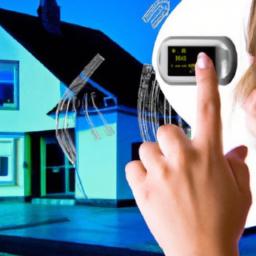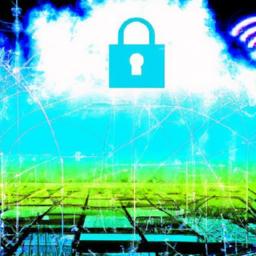Protecting Your Home and Data: Navigating Echo Show Privacy Concerns
Exploring the Extent of Echo Show Privacy Issues: An In-Depth Review
Insight
The Amazon Echo Show, a cutting-edge voice-controlled smart device featuring a screen, has become increasingly popular in the era of modern smart homes. Its capabilities include playing videos, making video calls, managing smart home systems, and functioning as an intercom. Despite these advancements in technology, concerns regarding data privacy are paramount and warrant thorough examination.
With the integration of more devices into our daily routines, the realm of smart home systems expands along with the critical issue of user data privacy. It is essential to recognize that these intelligent systems gather, process, and retain vast amounts of personalized data. Consequently, there is a heightened risk of privacy breaches that prompt significant inquiries about safeguarding user data.
The Scope of Echo Show Privacy Issues
An analysis of how Amazon’s Echo Show collects and utilizes data unveils several pressing concerns. The device remains on standby until it detects a ‘wake word,’ at which point it begins recording your voice. This process results in the accumulation of personal information ranging from music preferences to shopping habits. The collected data is transmitted to Amazon’s servers for processing and storage before potentially being shared with third-party applications. This continuous retrieval and utilization of data pose substantial privacy risks for users.
Another notable issue pertains to the susceptibility of Echo Show to hacking attempts. Like many other smart devices, skilled hackers could exploit vulnerabilities within the Echo Show system to gain access to its microphone or camera or even infiltrate the entire home network—leading to severe breaches in privacy.
In disconcerting instances like one involving an Oregon couple whose private conversation was inadvertently recorded by their Echo Show and sent to a contact without their consent—privacy violations associated with Amazon’s device have come under scrutiny. These incidents underscore prevalent concerns surrounding not only Echo Show but also similar technologies within smart homes.
Overview of Key Concerns
The escalating apprehensions surrounding Echo Show primarily revolve around its methods for collecting data, susceptibility to hacking threats, and documented cases illustrating breaches in user privacy. While this device has revolutionized interactive technology experiences significantly—it is evident that questions concerning privacy hold considerable weight and may overshadow perceived benefits associated with owning such innovative gadgets.
Determining Your Privacy Status: Assessing Echo Show’s Privacy Configurations
A crucial step towards safeguarding your privacy while utilizing Amazon’s intelligent assistant—the Echo show—involves comprehending its built-in privacy settings thoroughly—and optimizing them accordingly.
The default settings on an echo show are designed meticulously—to strike a balance between offering personalized services while upholding stringent measures for protecting user confidentiality right from unboxing.
However—similarly—to numerous digital gadgets necessitating personal information for seamless operation—familiarizing yourself with these settings empowers you—to dictate what kind-of-data—the gadget can access—and utilize.
This not only aids in addressing potential apprehensions related-to-privacy—but also contributes towards enhancing overall-user-experience significantly.
An In-depth Look at echo show’s Privacy Settings
One-of-the-crucial-aspects—that render echo show’s-privacy-settings pivotal—for safeguarding-user-data—is their direct correlation-to-the-device’s functionality.
These settings empower-users—to regulate echo-show’s access-to-their-personal-information—ensuring they have-a-say-in preserving their confidentiality.
For instance—you-can-utilize-these-settings—to restrict-the-gadget’s-access-to-your contacts-location-voice-recordings-and-more.
Nevertheless—a few default-settings-on-Echo-show-may raise-concerns-regarding-privacy
These include automatic-access-to-personal-content-like-calendars-email-and-shopping-lists
Moreover—the-gadget’s-capacity-for-learning-from-user-behavior-patterns—for delivering-a-more-tailored-experience-might be perceived-as-intrusive-by-some.
In comparison-with-other-smart-home-devices—the-privacy-settings-on-Echo-show-align-with-industry-norms
Nonetheless—privacy-experts-contend-that-a-one-size-fits-all approach-is-insufficient-for ensuring-security-in-tDisabling Unnecessary Features for Enhanced Privacy Protection
In the realm of digital home assistants, such as the Echo Show, safeguarding personal data is paramount. One effective way to achieve this is by disabling features that are not essential or may infringe on privacy. Additionally, regularly clearing voice history can prevent the device from retaining past interactions.
User Responsibility in Ensuring Data Protection
While the Echo Show offers some degree of privacy control, users bear the primary responsibility for protecting their data. By staying informed and proactive, users can maximize the device’s capabilities while minimizing potential privacy risks.
Exploring Echo Show’s Privacy Measures: A Controversial Debate
The debate surrounding smart devices like Amazon’s Echo Show centers on their privacy measures and impact on user data. This ongoing discussion involves both supporters and critics who offer valuable insights into whether these devices truly benefit users or pose significant privacy threats.
Supporters’ Perspective on Echo Show’s Privacy Measures
Advocates of Echo Show’s data collection emphasize its role in enhancing functionality through personalized experiences. For example, data accumulation improves voice recognition accuracy and responsiveness over time by exposing the device to diverse voices and accents. Personalized recommendations based on user behavior patterns further enhance user engagement and satisfaction levels.
Critics’ Concerns Regarding Echo Show’s Privacy Measures
Despite its benefits, critics express apprehensions about how Echo Show handles user information. Key criticisms include fears of data being shared with third parties without explicit consent for targeted advertising purposes. Critics also highlight perceived inadequacies in transparency regarding privacy policies and user control over their own data, along with concerns about potential vulnerabilities to hacking activities.
Addressing Privacy Challenges with Proactive Solutions
In light of these debates, it is crucial to explore strategies for overcoming privacy issues associated with devices like the Echo Show. Users can take proactive steps such as understanding and adjusting privacy settings according to their comfort level to prevent unauthorized access to personal information. By implementing these measures, users can coexist with smart devices while safeguarding their peace of mind and security in an increasingly connected world.
Exploring Privacy Features of Amazon’s Echo Show
When it comes to maintaining privacy while using smart devices like Amazon’s Echo Show, there are several key strategies that users can implement. These include adjusting settings such as disabling the camera or muting the microphone when not in use, as well as regularly deleting voice recordings to manage interaction history effectively.
Enhancing Privacy with Device Features
The Echo Show offers various privacy features that users can utilize to create a secure environment for their interactions. For example, the device includes a ‘do not disturb’ mode that prevents calls and notifications during specified hours, giving users more control over their privacy settings.
Amazon’s Commitment to Privacy Protection
As the parent company of Echo Show, Amazon has taken significant steps to address user concerns regarding privacy. The company has integrated robust safety measures into the device design, such as physical camera covers and built-in privacy hubs. Additionally, Amazon is committed to transparency in data use by allowing users to access, listen to, and delete their voice recordings at any time.
In response to ongoing discussions with consumers and regulators, Amazon plans to further enhance privacy controls and security protocols in the future.
Roles of Lawmakers in Strengthening Privacy Regulations
To bolster privacy protections for smart devices like Echo Show, lawmakers can enact regulations such as the General Data Protection Regulation (GDPR) or California Consumer Privacy Act (CCPA). These laws serve as deterrents against data misuse and empower users with rights over their personal information.
While no technology is completely immune from potential risks, understanding and actively managing privacy practices can help safeguard user security. Maintaining vigilance and adapting to evolving technological advancements are essential components of protecting personal data from potential breaches or invasions of privacy.
Evaluating Privacy Aspects: Advantages & Disadvantages of Amazon’s Echo Show
The integration of smart home systems like Amazon’s Echo Show has revolutionized daily living but also raised concerns about user data security. In this section, we will examine both the benefits and drawbacks related to the device’s approach towards ensuring user privacy.
Evaluating Privacy Aspects: Advantages & Disadvantages of Amazon’s Echo Show
The emergence of interconnected smart home technologies has transformed modern living experiences while simultaneously prompting discussions on data protection issues. Among these innovations is Amazon’s Echo Show – a device lauded for its functionality yet scrutinized for its impact on user confidentiality. Let us delve deeper into an analysis encompassing both favorable attributes and potential pitfalls concerning this gadget’s handling of private information.
Advantages in Terms of User Confidentiality
A couple of standout features contributing towards enhancing confidentiality within Echo Show include its customizable settings tailored towards safeguarding personal information along with options enabling microphone muting capabilities alongside camera deactivation functionalities.
This adaptability allows individuals utilizing
Echo
Show
a diverse range
.
This adaptability allows individuals utilizing
Echo
Showto tailor specific preferences aligning with evolving digital confidentiality requirements.
User modifications may encompass limiting third-party application access,
determining communication recording preferences,
Mic Muting Capabilities Alongside Camera Deactivation Functionalities:
Mic Muting Capabilities Alongside Camera Deactivation Functionalities:
Mic Muting Capabilities Alongside Camera Deactivation Functionalities:
Mic Muting Capabilities Alongside Camera Deactivation Functionalities:
Mic Muting Capabilities Alongside Camera Deactivation Functionalities:
Mic Muting Capabilities Alongside Camera Deactivation Functionalities:
Mic MThe Echo Show by Amazon has gained popularity due to its advanced features and convenience in the smart home ecosystem. However, there are concerns regarding the data collection practices of the device, despite having customizable privacy settings. This article delves into the potential risks and benefits associated with using an Echo Show.
Privacy Concerns
One of the primary issues surrounding the Echo Show is its data collection capabilities. While users can adjust privacy settings, certain information like voice commands and shopping behaviors are still stored by Amazon. This raises questions about the extent of data collected and how it is utilized by the company.
Potential Security Risks
Although the Echo Show is designed to be secure, there have been instances where it has been hacked, leading to concerns about user data protection and privacy breaches. This susceptibility to hacking highlights a significant risk associated with using this smart home device.
Evaluating Pros and Cons
when considering both advantages and disadvantages related to privacy issues, Amazon’s Echo Show presents a mix of opportunities and challenges for users. The device offers customizable privacy features such as microphone muting and camera shutoff options that enhance its appeal. However, worries about data collection practices, usage policies, and vulnerability to hacking cannot be ignored. It is crucial for users to understand these aspects thoroughly in order to make informed decisions about their data privacy while enjoying the convenience offered by this innovative technology.





